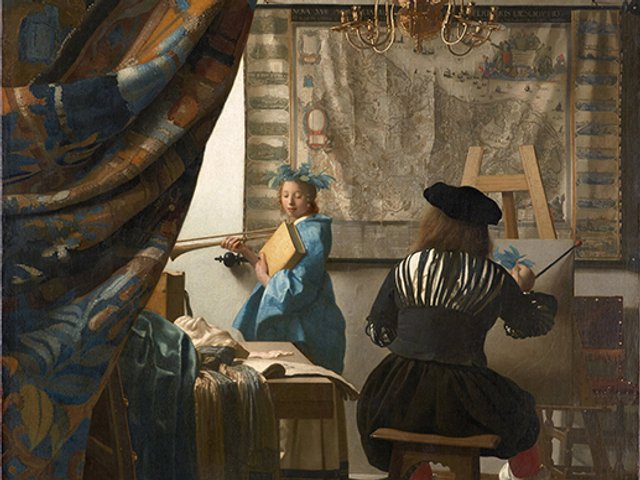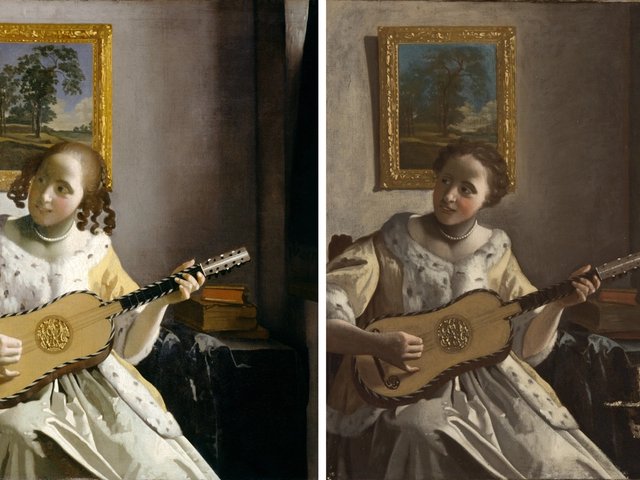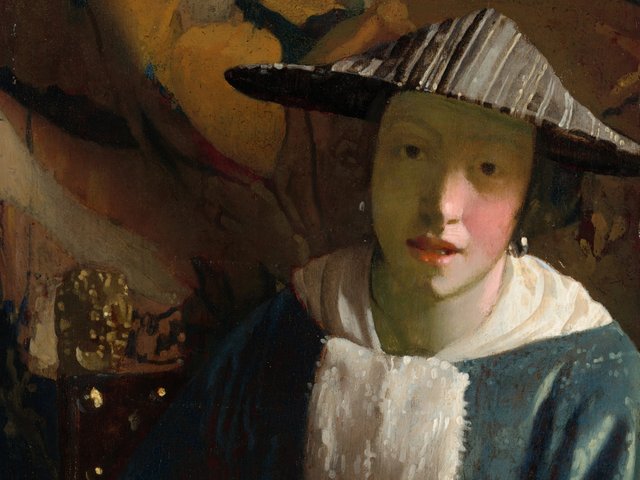Could a virtually unknown Vermeer painting be languishing in the storeroom of the Philadelphia Museum of Art? His pictures are very rare and curators of the current Rijksmuseum retrospective Vermeer (until 4 June) state that there are only 37 surviving works.
Arie Wallert, a former Rijksmuseum scientific specialist, told a symposium in Amsterdam that he believes there is one more. He is convinced that there are two versions of the young woman playing a guitar: the long-accepted painting at Kenwood House, in north London, and a very similar composition that has been in the Philadelphia museum’s stores for nearly a century.
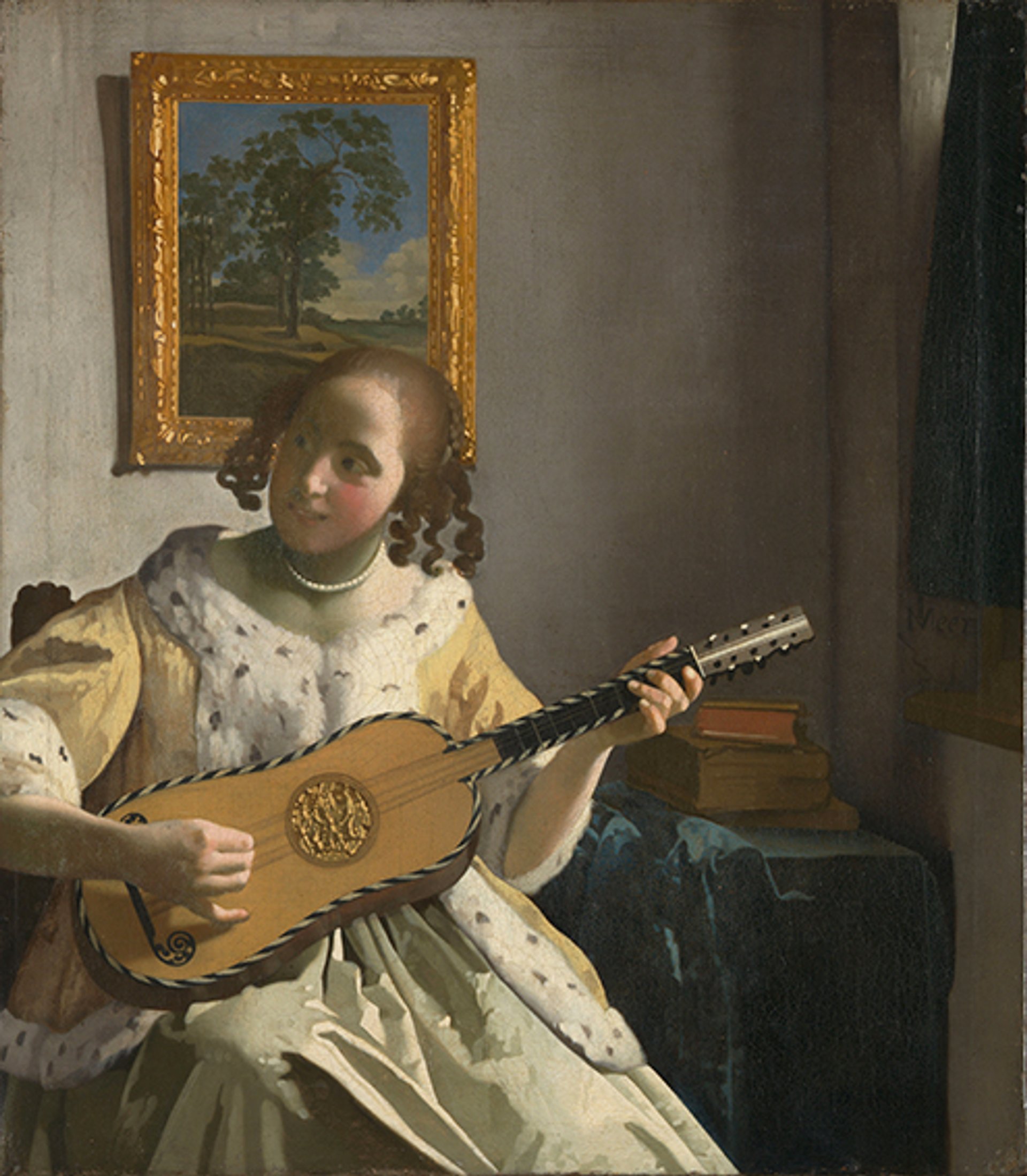
Johannes Vermeer, The Guitar Player (around 1672), in the collection of Kenwood House, London
Philadelphia’s Lady with a Guitar was assumed to be the original, until the Kenwood version emerged in 1927. But because Kenwood’s The Guitar Player was in considerably better condition and appeared authentic, it was quickly accepted as the prime version.
As Vermeer was not believed to have had a studio or followers, and no other contemporaneous copies of his works are known, the Philadelphia picture was then downgraded as a later copy. It has never been displayed in the museum’s main galleries and has very rarely been reproduced in colour (the museum’s website only has a black-and-white image).
Wallert, who examined Philadelphia’s Lady with a Guitar and analysed paint samples, believes it is not only a 17th-century work, but is actually “a painting by Vermeer”.
He identified traces of ultramarine, an expensive pigment used by the master, as well as lead-tin yellow, which went out of use in around 1700. He describes the pigments he found as “combinations that nobody else used at the time”.
Wallert also made a precise comparison of the two pictures, which are the same size, and he believes that they were both made from the same working drawing, which is now lost.
The compositions are virtually the same, except for one key difference: the girl’s hairstyle. Although Wallert has not commented on it, it not being his specialist field, the corkscrew ringlets in the Kenwood picture were worn in Vermeer’s time, although they would have been complicated to care for. If both paintings are indeed by Vermeer then it is difficult to explain why he chose to portray two rather different hairstyles.
Sadly, the Philadelphia painting is in what Wallert describes as a “shocking” condition. Much of the top layers of paint have been abraded, probably caused by over-cleaning before it entered the museum in 1933. The painting was last conserved in 1973, when old varnish and retouching was removed, revealing considerable surface damage and an old tear in the lower right.
The earliest firm provenance for the Philadelphia picture appears to be the Cremer collection in Brussels in the 19th century. It was later acquired by the Pennsylvania lawyer John Johnson, who died in 1917.
The status of Philadelphia’s Lady with a Guitar will now need further reassessing, following recent investigations at Washington, DC’s National Gallery of Art. The Washington specialists have controversially argued that their own Girl with a Flute was made in the “studio of Vermeer” (dating it to 1669-75), a surprise since until now it has been assumed that Vermeer worked by himself, without assistants. The Rijksmuseum rejects the Washington conclusion and is currently exhibiting the Girl with a Flute (1664-67) as by the master.
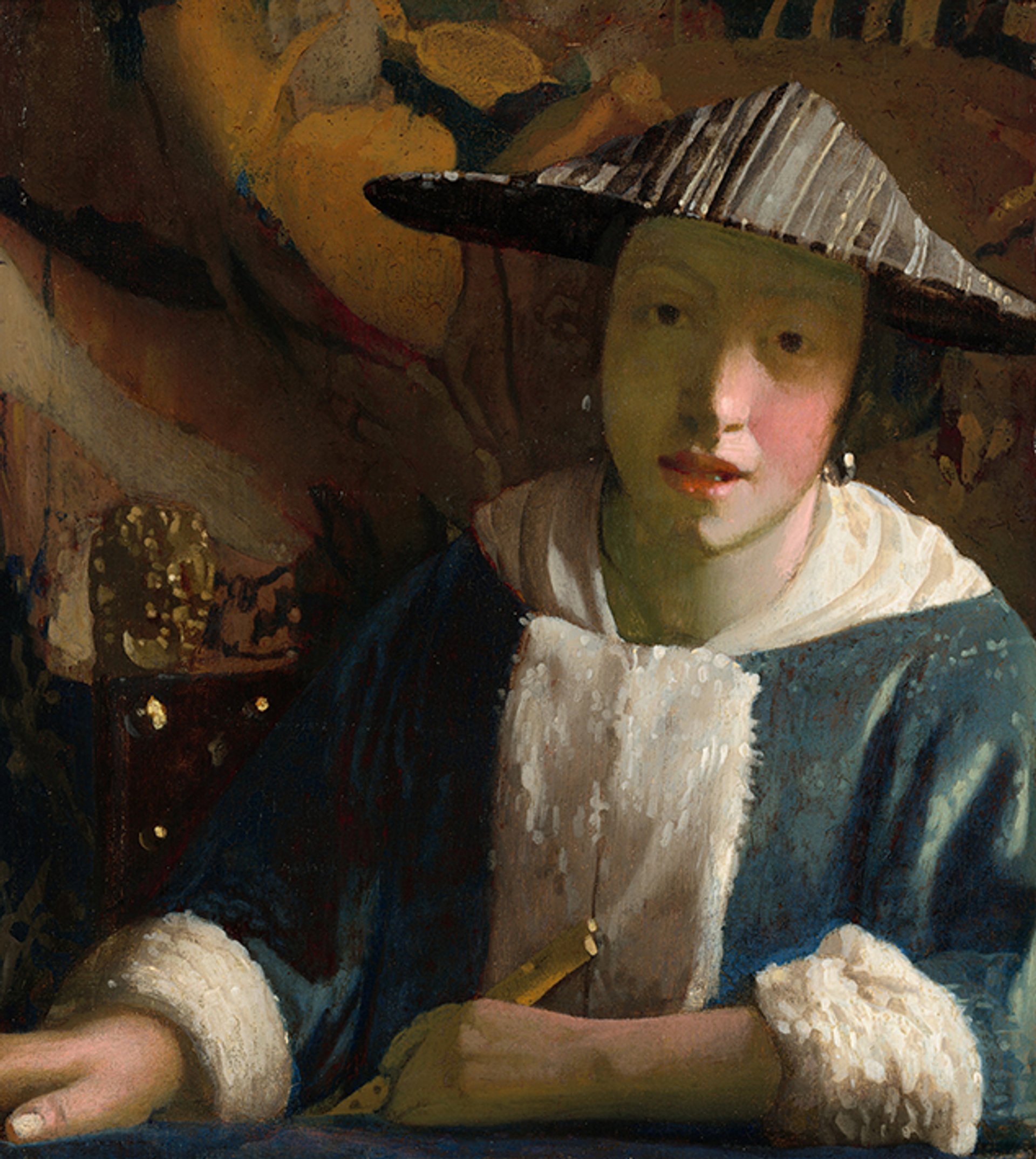
The National Gallery of Art in Washington, DC has concluded that Girl with a Flute (around 1669-75) was made in the “studio of Vermeer”
But if the existence of a studio is accepted, then it could open the door to considering Philadelphia’s Lady with a Guitar as a work by someone close to Vermeer, rather than as Wallert argues, by the master.
Kenwood’s prime version, now dated to around 1670-72, is among the artist’s final works. It could not be presented in the Rijksmuseum’s current Vermeer exhibition, since its fragile condition made it too risky to travel.
The Philadelphia museum's director, Sasha Suda, comments: “The future of Lady with a Guitar will be to inspire discussion, embracing scholarship, and to seek more knowledge and enlightenment from this mysterious painting nearly 350 years after its creation”.



